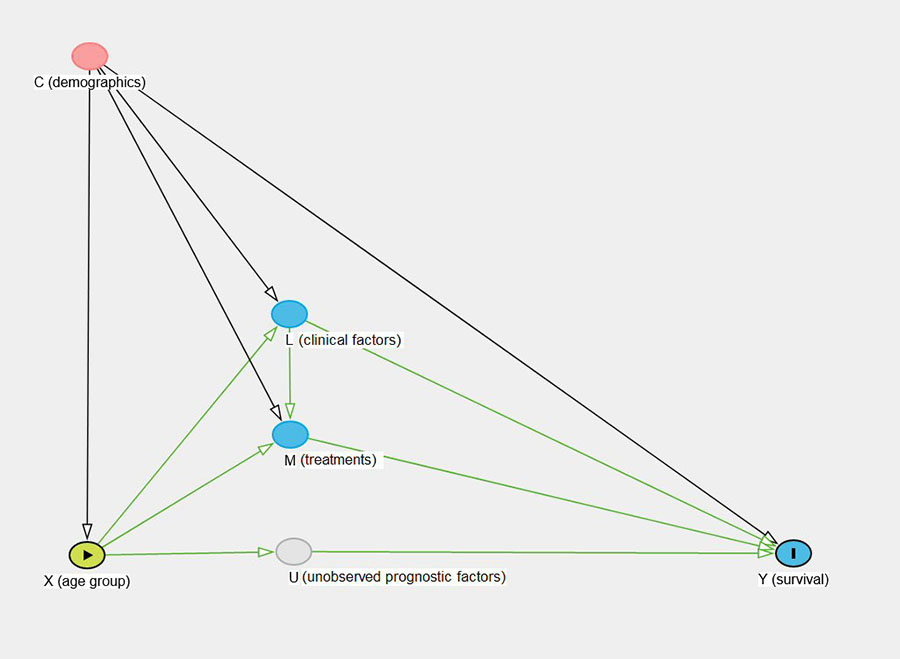The Northern Ireland local group of the RSS held an online meeting using MS Teams on Wednesday, 1 December 2021, at 1pm. The speaker was Dr Finian Bannon of Queen's University Belfast.
Dr Bannon presented research regarding the use of causal inference methods to estimate under-treatment among older patients with lung cancer in Northern Ireland. Some funding bodies have queried whether there may an unconscious, age-related, bias in levels of treatment that older adults, with associated levels of multimorbidity, receive. No formal definition or statistical formulation for under-treatment exists (Akinoso-Imran, et al, J. Gerriatric Oncology, doi.org/10.1016/j.jgo.20241.11.004, 2021). For the purposes of this research, under-treatment was defined as the proportion of the survival deficit between younger and older patients that is caused by lower clinically-specific treatment rates in the older patients.

Figure 1: DAG showing assumed pathways of influence.
Data access was facilitated by the Northern Ireland Cancer Registry, which provided access to a linked data set of 4,232 patients diagnosed with non-small cell lung cancer between 2012-2015 and followed-up for a maximum of two years. Older adults, defined as adults 75 years and over, comprised 41% of the cohort. Patient characteristics of interest included demographic confounders (C) (eg age, gender, deprivation), intermediary confounders (L) (eg stage of diagnosis, comorbidities, performance status/mobility) and treatment mediators (M) (eg surgery, radiotherapy, chemotherapy). The distribution of stage of lung cancer was similar between the two groups, but older patients had higher levels of some comorbidities and were less active than younger patients.
The Directed Acyclic Graph (DAG) is depicted in Fig 1. The pathway relating to age-related under-treatment is age (X)→ treatments (M) → survival (S), where age is considered to have its own effect on whether a patient receives treatment or not. Causal mediation analysis was performed using the g-computation formula (available in Stata). The total causal effect was estimated using two pseudo-populations, one where everyone's age was fixed at under 75 years and the other where everyone was forced to be 75 years and over, with intermediary confounders, treatment mediators, and survival simulated for each pseudo-population using regression methods. The total causal effect on the deficit in survival between the old and young at 1 year was 15%, of which only 2.7% was caused by under-treatment (mainly surgery/chemotherapy) and this was mostly driven by WHO performance status (Normal, ..., Bed-bound).
The meeting included questions regarding implementation of the methodology. Everyone agreed that the talk was very clearly presented and was well-received. The chair concluded the meeting by thanking everyone for their attendance and support over 2021 and wished them a happy Christmas and best wishes for 2022.
Author
Written by Ronald McDowell on 1 November 2021.